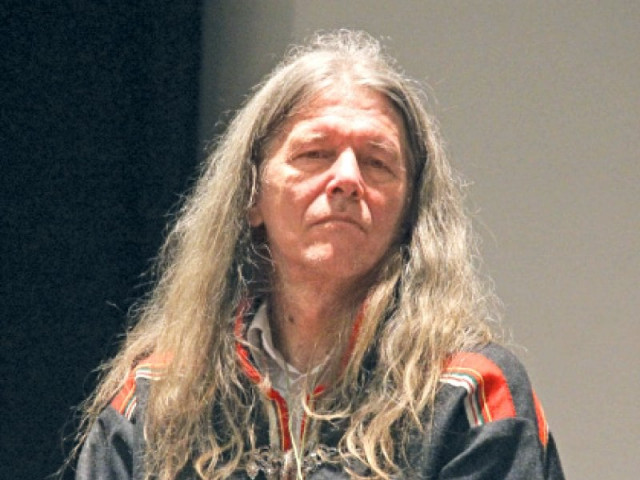4th ASNA Clay Triennal: Drawing inspiration
John Skognes from Norway shares stories from the Scandinavian mountains.

John Skognes from Norway shares stories from the Scandinavian mountains.
It won’t be completely wrong to say that Merran Esson’s ceramics are inspired by her geographical experiences at different points in her life.
Speaking at the Fourth ASNA Clay Triennial seminar on Saturday, Esson said that her “work is about place and the histories and traditions of place.” She is the chairperson of the department of ceramics at the National School of Arts in Australia.
Etching out metallic surfaces on clay, Esson says that she’s interested in containers, as her childhood was spent on a farm in rural Australia, a place where water was stored in large tanks. It is from here that Esson’s glazed ceramics find their spiral form and metallic texture.
At the seminar, Esson also spoke about the time that she spent in Broken Hill, a sparsely populated desert town, and from here, did her almost metallic clay works, “take the impressions of rocks and the trees in the desert.” In essence, her work that drew inspiration from geography back home collided with nature’s topography.
This individualistic aura and inspiration from geography attached to an artist’s work was further consolidated when Norway’s ceramist, John Skognes, came on stage.

Skognes, who has been working as a potter since the 1980s, lives in the Scandinavian mountains. He said his work is his own interpretation of nature, adding that “nature is very important to us Norwegians. As a potter, I was inspired by flames.”
Wood fire, clay and salt glaze are the medium Skognes works with. His art work, he points out humbly during the question-and-answer session, is functional and in this era of commercialisation, people seem to have forgotten the importance of traditional ceramics.
Ceramics according to Turkey’s Sevim Cizer, is not just the artist’s personal expression, but has societal influences too, which both Esson and Skognes accede to.
Chairing University of Dokuz Eylul’s Department of Ceramics, Cizer says, even contemporary ceramics from “the Anatoliyan Peninsula are layered with history left behind by many great civilisations.”
“Traditions, customs and our behaviour are resources for artists, as is the cultural heritage passed down by various civilisations centuries ago,” Cizer said.

Paintings versus ceramics: a clash of art forms
Painters enjoy a definite monopoly over art galleries, points out an art student at the Fourth ASNA Clay Triennial. Sitting in the audience during the question-and-answer session with moderator Ela Mukherjee, a ceramist from India, the student goes on to explain that, “Art galleries cater to painters because throughout history, kings and princes have patronised painters which gives them an advantage over ceramists.”
Artists Reyaz Badruddin and Aasim Akhtar agree with this assessment. Akhtar, who teaches ‘Art Appreciation’ at Fatima Jinnah Women’s University, Rawalpindi, explains how public demand influences the form of art preferred by galleries. “The pieces demanded by art galleries are defined by the demand of collectors and buyers,” he says. “We [Pakistanis] don’t value ceramics because we are trained so by instructors and educationists.” Pottery is a form of art that has developed in the subcontinent and is “local to us”, the student adds. Quoting the ‘ghar ki murghi daal barabar’ [meaning home art is ignored merely because it is local] saying, she regrets that the subcontinent has ignored the aesthetics of pottery and ceramics, and focuses purely on their functionality. Her attempts to prove ceramics is a better art form, leaves the audience in giggles. “I don’t understand why people prefer paintings. I feel my art is alive. I can’t walk around a painting.” Meanwhile, Badruddin, a ceramist from India, shows a collection of photographs of his works as well. His works have been influenced by other artists, particularly Sandy Brown. “After attending a workshop by Brown, I began to look into the possibilities of using porcelain and plaster as art forms.” Towards the end of the discussion, another art student steers the discussion towards the right of any one individual to judge someone’s art. “If someone draws two lines on a block of clay, who is to say that that is not art,” she asks.
Published in The Express Tribune, January 13th, 2013.



















COMMENTS
Comments are moderated and generally will be posted if they are on-topic and not abusive.
For more information, please see our Comments FAQ